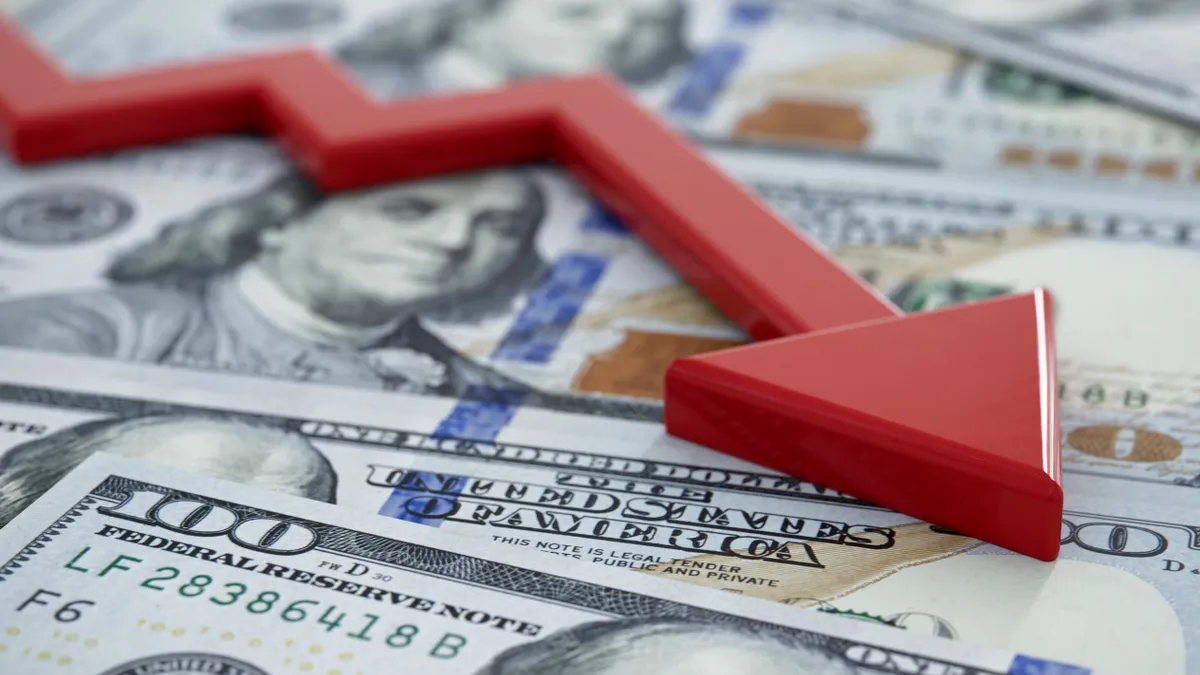Dive Brief:
- Retailers are bracing for further economic volatility in 2023, with many updating their sales and profit outlooks for the coming year as inflation and rising interest rates see consumers cut spending.
- Chesapeake, Va.-based-Dollar Tree, for example, forecasts weaker than expected 2023 profit as it faces a pullback in consumer spending, increased labor costs and other headwinds, anticipating earnings per share between $6.30 to $6.80, it said in its earnings report released Wednesday. The company expects consolidated net sales between a range of $29.9 billion to $30.5 billion in 2023.
- The company’s 2023 outlook also includes $430 million in operating expenses, with about two-thirds of that figure “related to wage and wage-related items,” CFO Jeffrey Davis said on the earnings call in response to questions. The company will be increasing average hourly wages by an estimated $2 for the two-year period between 2022 and 2023, CEO and chairman Rick Dreiling said.
Dive Insight:
Dollar Tree said that Davis, an alum of Qurate Retail Group, would take on its top financial seat in August, one of several executive leadership changes, swaps and departures announced by the company in 2022. The discount retailer announced that Dreiling, a veteran of its rival Dollar General, would serve as its CEO in late January, displacing former CEO Mike Witynski.
The retailer’s reshuffled leadership team is far from alone in anticipating ongoing headwinds in 2023. Home Depot CFO Richard McPhail noted the company is expecting flat consumer spending for the year during its fourth quarter earnings call on Feb. 21, for example. Meanwhile, leaders at fellow retailer Walmart forecast sales growth of between 2.5% to 3%, with finance chief John Rainey noting there is “considerable pressure on the consumer.”
“Attempting to predict with precision these swings in macroeconomic conditions and their effect on consumer behavior is challenging,” Rainey said of 2023 guidance during Walmart’s fourth quarter earnings call.
Consumer confidence plummeted in February for the second consecutive month, with consumer expectations for the next six months reaching their lowest points since July according to a recent report by the Conference Board.
Skyrocketing prices have “put pressure on discretionary spending as consumers make room for higher prices on necessities,” Target CFO Michael Fiddelke acknowledged Tuesday during the company’s fourth quarter earnings call, while rising interest rates bump up mortgage and car payments.
The retailer also pointed to shifting consumer behavior as a factor to watch both in 2023 and beyond; While some consumer behaviors have returned to pre-pandemic norms, others — such as the popularity of hybrid work and more engagement with digital sales — “appear to have changed forever,” Fiddelke said.
Other factors are still in transition, he said — the retailer is still facing elevated costs in its global supply chain compared to pre-pandemic periods, for example, while also facing expanding inventory shrinking which has “increased broadly across U.S. retail over the past two years,” Fiddelke said.
For the full year, Target is expecting both GAAP EPS and adjusted EPS to range from $7.75 to $8.75, according to its earnings release.














